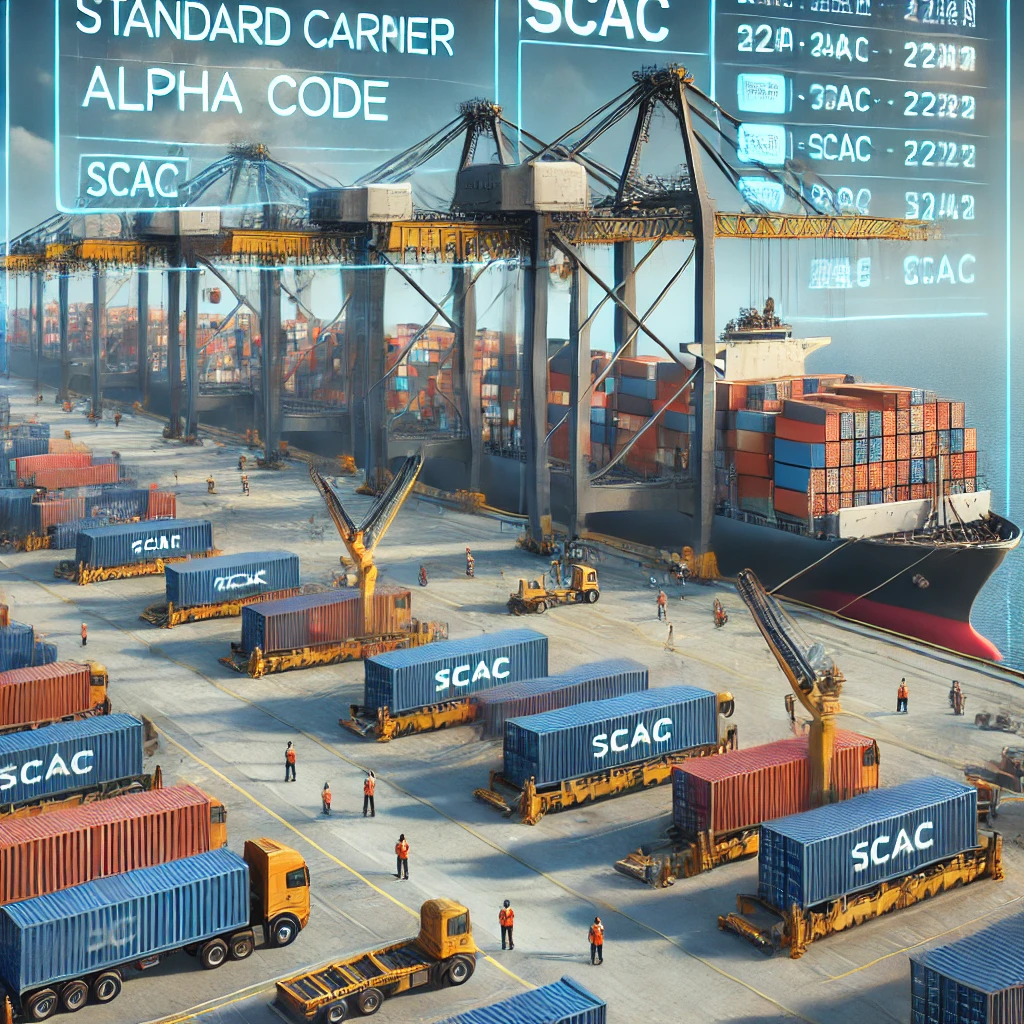A Beginner's Guide to Standard Carrier Alpha Code (SCAC)

What is the Standard Carrier Alpha Code (SCAC)?
The Standard Carrier Alpha Code (SCAC) is a unique two-to-four-letter code assigned to transportation companies to identify them in various supply chain operations. Developed by the National Motor Freight Traffic Association (NMFTA), the SCAC system helps streamline the identification of carriers in bills of lading, shipping documents, and other logistics-related paperwork.
SCAC codes are used widely in the shipping and transportation industries, especially in international trade, where it is essential to distinguish between different carriers and ensure the efficient processing of goods.

Key Features of SCAC:
- Unique Identifier: SCAC provides a unique identifier for each transportation company or carrier, making it easier to track and manage shipments.
- Industry Standard: The SCAC system is used by a variety of businesses, including freight forwarders, third-party logistics providers, and customs brokers.
- Carrier Information: The SCAC code helps provide detailed information about the carrier, such as their transportation mode (e.g., air, sea, road), and their service area.
- Standardized Format: The SCAC follows a standardized format of two to four letters, ensuring that each code is unique to the carrier.
How Does the SCAC System Work?
The SCAC system functions as a means of tracking and identifying carriers in the logistics and transportation industries. Here’s how it works:
- Assignment of SCAC Codes: Transportation companies, including motor carriers, air carriers, railroads, and shipping lines, apply for SCAC codes through the NMFTA. Each carrier is assigned a unique SCAC that will be used across multiple systems.
- Integration in Shipping Documents: SCAC codes are integrated into shipping documents, such as bills of lading, freight invoices, and shipping manifests. The use of SCAC ensures that all parties involved in a shipment can easily identify the carrier responsible for transportation.
- Tracking and Monitoring: When goods are in transit, the SCAC code enables shippers, freight forwarders, and other stakeholders to track the status of the shipment and coordinate transportation activities with the appropriate carrier.
- Data Management: The SCAC system enables businesses to manage carrier data more efficiently. For example, customs authorities can use the SCAC code to verify the identity of a carrier during import/export procedures.
.

Practical Uses of SCAC Codes
SCAC codes play a significant role in a wide range of practical applications within logistics and transportation:
- Freight Bill Management: SCAC codes help streamline the management of freight bills by allowing businesses to quickly identify the carrier associated with each shipment. This can help ensure accurate billing and payment processing.
- Shipment Tracking: The SCAC code is used to track shipments in real-time. By using SCAC, businesses can follow the progress of goods and monitor their arrival at the destination, ensuring that customers are kept informed of delays or issues.
- Customs Clearance: SCAC codes are essential for customs clearance processes, particularly for international shipments. They help identify the carrier during customs inspections, ensuring that goods are cleared through customs quickly and efficiently.
- Data Integration: The SCAC system is integrated into many digital logistics platforms and software solutions. This allows businesses to seamlessly manage transportation data, improve accuracy, and optimize logistics operations.
Why Is SCAC Important for Businesses?
The Standard Carrier Alpha Code (SCAC) is essential for businesses in the logistics, shipping, and transportation industries because it simplifies the process of identifying and managing carriers. Here are a few reasons why SCAC is crucial:
- Enhanced Operational Efficiency: By using SCAC codes, businesses can quickly identify carriers and streamline processes like shipment tracking, billing, and invoicing. This leads to more efficient operations and reduced administrative work.
- Improved Communication: SCAC codes standardize the identification of carriers, making it easier for businesses, freight forwarders, customs brokers, and other parties to communicate about specific shipments. This reduces the chance of errors or miscommunication.
- Increased Visibility: SCAC codes help increase visibility into the transportation process, allowing businesses to track their shipments with greater accuracy. This visibility is particularly important for companies managing international trade and complex supply chains.
- Regulatory Compliance: The SCAC system helps ensure that businesses comply with various regulations, including customs requirements and transportation laws. The system allows authorities to verify carrier information quickly and accurately.
- Cost Savings: By improving the efficiency of logistics operations, SCAC codes can help businesses reduce costs. The streamlined tracking and management of shipments can lower operational expenses, reduce delays, and improve the overall customer experience.

How to Find and Use SCAC Codes
- Requesting SCAC Codes: Carriers can apply for an SCAC code through the National Motor Freight Traffic Association (NMFTA). The NMFTA assigns codes based on the carrier’s business name and operations.
- Using SCAC in Logistics Software: Many logistics management platforms integrate SCAC codes for streamlined carrier identification. This helps companies improve shipment visibility, automate billing, and track the performance of different carriers.
- Reference for Documentation: SCAC codes should be included in various shipping and logistics documents such as the bill of lading, shipment manifests, and customs paperwork. This ensures that all parties involved have the necessary information for smooth transactions.
- Carrier Code Lookup: If you need to find the SCAC code for a specific carrier, you can use the official NMFTA website or other carrier databases to look up the code by the carrier’s name or services.
Conclusion
The Standard Carrier Alpha Code (SCAC) is a powerful tool that enhances the efficiency, accuracy, and visibility of the logistics and transportation industries. By providing a unique identifier for carriers, SCAC streamlines processes such as shipment tracking, invoicing, and customs clearance. Businesses in the shipping, freight forwarding, and logistics sectors rely on SCAC codes to optimize operations and maintain a smooth flow of goods across the supply chain.
Understanding how SCAC works and how it fits into the logistics ecosystem is crucial for professionals and businesses looking to improve operational efficiency, compliance, and communication. Whether you’re a freight forwarder, a shipper, or a logistics provider, SCAC is an essential component of modern supply chain management.
